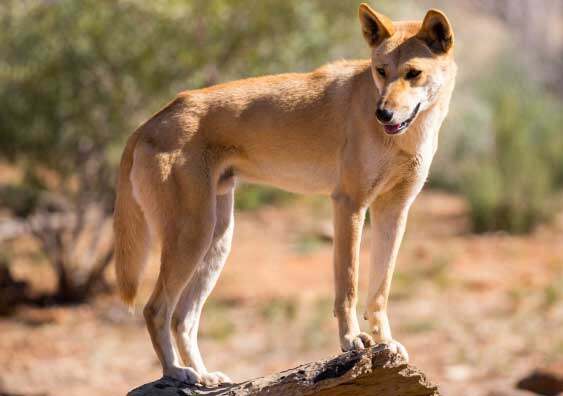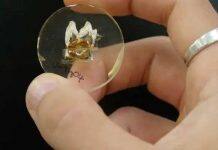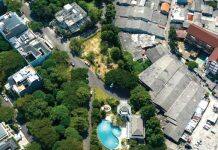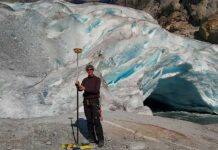Genetic analysis shows dingo populations have significantly less dog ancestry than previously thought.


Wild dingo populations have less dog lineage, with a significantly greater proportion of pure dingoes than previously thought, according to new research, challenging the view that pure dingoes are on the decline due to crossbreeding.
The findings, published in Molecular Ecology, suggest previous studies significantly overestimated the prevalence of dingo-dog mixes in the wild and that lethal methods to control ‘wild dogs’ target pure dingoes.
Dingoes are genetically distinct from domestic dogs but can interbreed. Cross-species breeding, or hybridisation, can threaten pure species, which may become vulnerable to extinction by genetic dilution.
“For decades, there was fear that dingoes were breeding themselves into extinction. But our findings suggest this isn’t the case, and dingoes are largely maintaining their identity, which has implications for their management and conservation,” says Dr Kylie Cairns, a conservation biologist from UNSW Science and lead author of the study.
More pure dingoes than hybrids
For the study, the research team led by UNSW Sydney investigated the extent of dingo hybridisation in different regions across Australia. They used a new genome-wide test to analyse the DNA of 391 wild and captive dingoes and conducted detailed ancestry modelling and biogeographic analysis to find wild dingoes had far less dog ancestry than suggested by prior genetic studies.
“The old method, which relied on a relatively small number of genetic markers and limited reference population, overestimates the amount of dog ancestry in dingo samples – sometimes by over 30 per cent,” Dr Cairns says. “This meant it often identified an animal as crossbred when it was a pure dingo or historical backcross.
“But with the new test, we can look at 195,000 points across the genome compared with just 23 previously. So, it’s a huge step up in reliability and accuracy.”


Previous DNA testing methods overestimated the amount of dog ancestry in dingoes. Photo: Shutterstock.
In Victoria, where previous reports suggested the pure dingo population was as small as 4 per cent, the study found 87.1 per cent of animals tested were pure dingoes and 6.5 per cent were historical dingo backcrosses with more than 93 per cent dingo ancestry.
Similarly, in New South Wales and Queensland, where dingo-dog hybridisation is assumed to be pervasive, most animals were found to be pure dingoes, and only two wild canids had less than 70 per cent dingo ancestry.
Little evidence of hybridisation in the dingo population was also found in the Northern Territory, South Australia, and Western Australia.
“Reliance on outdated DNA testing methods has led to the belief that dingo–dog hybridisation is much more common in Australia than it really is,” Dr Cairns says. “Most dingoes in the wild are pure dingoes, and the remaining animals are more dingo than anything else.
“Even in the parts of Australia where dingo-dog hybridisation is higher, it is not the pervasive threat we’ve been led to believe.”
No animals in the sample were 50 per cent hybrids – meaning none were direct offspring of a dog and a dingo in the wild. The few animals that weren’t pure dingoes were mostly historical backcrosses with a single dog ancestor four or five generations in the past.
“While there has been some hybridisation in the past, it’s not occurring at a rapid pace today,” Dr Cairns says. “Where it does happen, we can see the offspring of the hybrids returning to their dingo roots over time.”
The study also found significant regional variation in dingoes, with four distinct wild dingo populations across mainland Australia.


The research also found there are four wild dingo varieties, with captive dingoes forming their own population. Photo: Shutterstock.
“We didn’t have samples from every single corner of Australia. So, there may be even more variation in dingoes,” Dr Cairns says. “There’s also a chance some dog DNA has been integrated into the dingo genome because it’s provided an evolutionary advantage, so that’s something we plan to investigate in future research using the new testing.”
The findings are consistent with studies in other species demonstrating genome-wide analysis performs more accurate identification of ancestry, which policymakers can use to inform dingo management.
“Existing management decisions have been based on the findings from old DNA testing technology with limited resolution,” says Professor Mike Letnic, a conservation biologist from UNSW Science and senior author of the study. “We now have a more advanced approach using higher-density genomic data that can be applied to dingoes to assess populations more accurately and inform management strategies with best-available evidence.”
Informing evidence-based dingo management
In Australia, the term “wild dog” is widely used in policy under the assumption there is widespread dingo–dog hybridisation and very few remaining pure dingoes.
Under the name “wild dog”, dingoes, dingo-hybrids, and feral domestic dogs are all considered invasive species under biosecurity legislation and subject to eradication measures like aerial baiting or trapping across parts of the Australian mainland, including National Parks where native animals are protected.
“It’s convenient to paint all dingoes as wild dogs. But the term obscures the reality that many pure dingoes and dingo-dominant backcrosses are being killed,” Dr Cairns says. “In fact, no other native species is treated in quite the same way as the dingo, which is subject to lethal control measures across all landscapes, including ones where they should be protected.”
Environments without dingoes can get overrun by kangaroos, foxes and feral cats that threaten other native animals and can change vegetation significantly.
“Dingoes are a threat to some livestock, but they’re not a pest in all contexts. They play a crucial role as apex predators in maintaining ecosystem function and biodiversity,” Prof. Letnic says. “So, there’s a real need find a balance in management and ensure there are places in the landscape where we maintain populations.”


The findings have implications for the management of dingoes across Australia. Photo: Shutterstock.
Lethal control methods, particularly during dingo breeding season, may inadvertently increase the risk of hybridisation by reducing the availability of pure dingo mates. However, more research is needed to confirm the link.
“While we don’t have many hybrids running around like previously suggested, where dingo-dog hybridisation does occur, it’s in regions where intensive lethal control is used and where there are higher numbers of domestic pet dogs,” Dr Cairns says.
The researchers suggest that the definition of “dingoes” in conservation policy should be revised to include historical dingo backcrosses with 93 per cent or more dingo ancestry and distinguish them from “feral domestic dogs.”
“Doing so will more accurately reflect the identity of wild canids in Australia and acknowledge the value of dingoes as a native and culturally significant species,” Dr Cairns says.








































